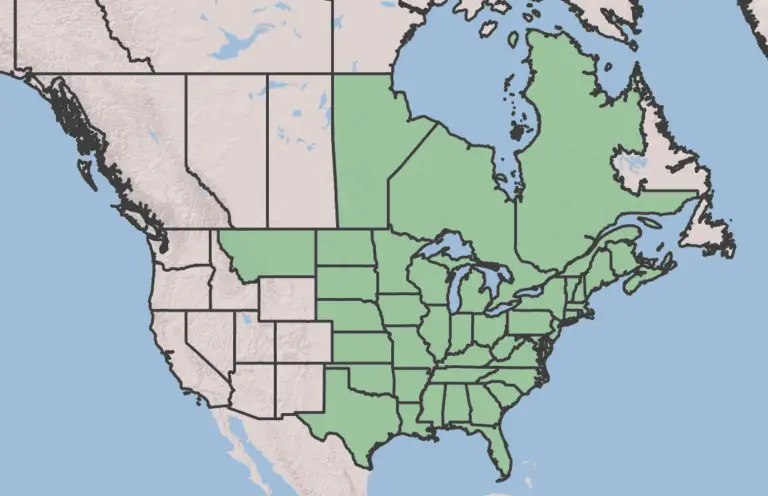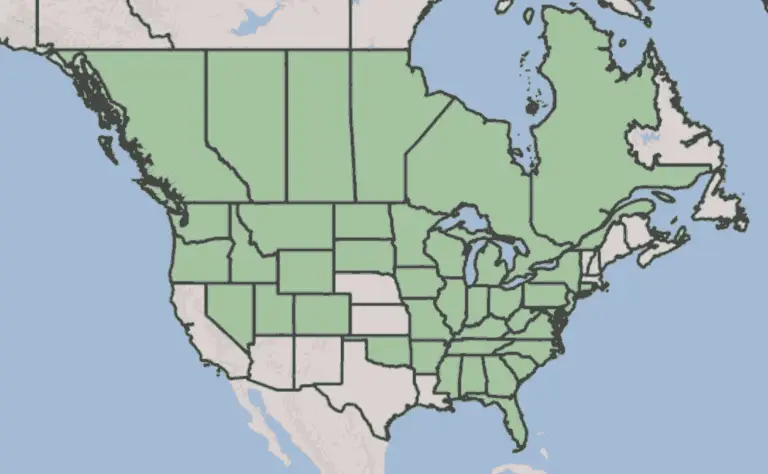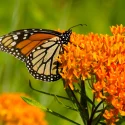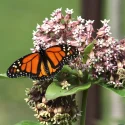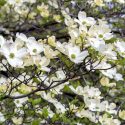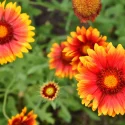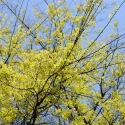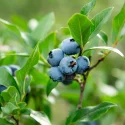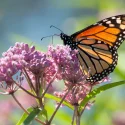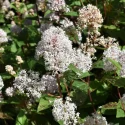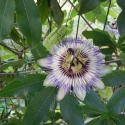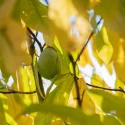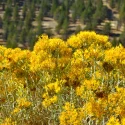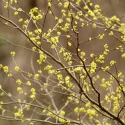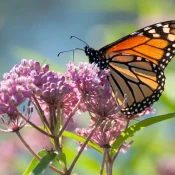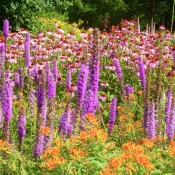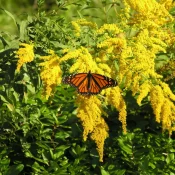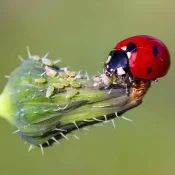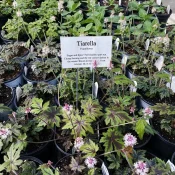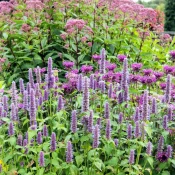Golden Alexanders are one of the cheeriest natives you can grow—bright yellow flowers that bloom from April to July, then lush green leaves that stick around all summer. They’re important host plants for Black Swallowtail butterflies, whose caterpillars also feed on other parsley-family plants like dill and fennel. Easy to grow, tolerant of many soils, and happy in full or part sun, Golden Alexanders are a simple way to add color and butterfly sightings to your yard.
- Full Sun, Part Sun
- Medium (3-5')
- Spring flowers
- Host Plant
Golden Alexander's shape is a perfect butterfly landing pad
Is Golden Alexander a good choice for my yard?
Yes, if…
- You want bright color in spring to early summer.
- You’re planting for butterflies, especially Black Swallowtails.
- You have full sun or part sun and don’t want to fuss about soil type (they’ll grow in loam or clay).
- You’d like a low-maintenance perennial that comes back year after year with little care.
- You’re looking for a medium-height filler to pair with coneflowers, bee balms, or grasses.
Why Golden Alexander matters
Planting Golden Alexander helps your garden and the wider ecosystem thrive:
- Host plant power: Essential food for Black Swallowtail caterpillars.
- Pollinator buffet: Flowers bring in bees, butterflies, and other pollinators.
- Fuss-free beauty: Perennial, drought-tolerant once established, and low-maintenance.
- Long-lasting impact: Flowers in spring to early summer; foliage keeps the garden green after.
New to native?
Before lawns and landscaping, native plants were here. They’ve fed birds, bees, and butterflies for thousands of years—and they’ll do the same in your yard. The best part? They’re easier to grow than you think.
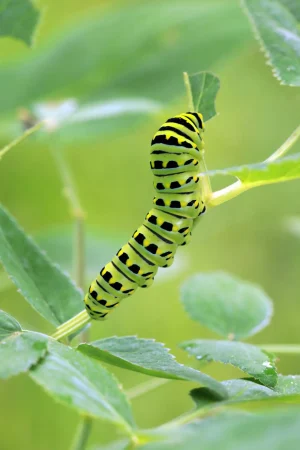
Golden Alexander is a part of the parsley family
Golden Alexanders are part of the parsley family, which makes them an essential host plant for Black Swallowtail butterflies. Their caterpillars rely on parsley relatives—including dill, fennel, carrots, and Golden Alexanders—for food.
In the wild, Golden Alexanders are a dependable native source, offering both lush greenery for caterpillars and bright yellow blooms in late spring that attract bees, butterflies, and other pollinators. Planting them means you’re not just adding color to your garden—you’re directly supporting the life cycle of Black Swallowtails and helping local wildlife thrive.
What is a host plant?
A host plant is a specific plant that a bug, butterfly, or caterpillar eats, lives on, or lays its eggs on.
What is Golden Alexander’s native range?
Its native range depends on the species. The common name ‘Golden Alexander’ often includes two species of plants:
Golden Alexander
Zizia aurea
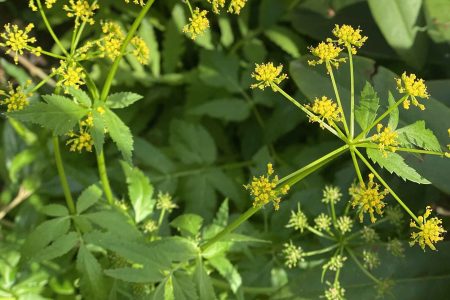
Same yellow flowers, but notice those sharp-pointed leaves?
This plant is native to most of the United States and Canada. You can plant Golden Alexander in the Northeast, Mid-Atlantic, Midwest, or the South along with the eastern half of Canada.
Heartleaf Alexander
Zizia aptera
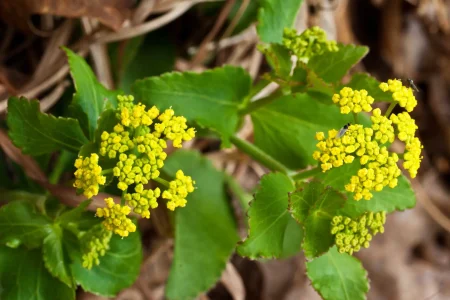
Same yellow flowers, but notice those rounded, larger leaves?
This plant is native to almost all of North America, and its range is huge! When sourcing seeds and plants that have huge native ranges, try to stick to sources within 800 miles to reap the benefits of plant provenance.
Wondering how to tell which is which when you’re at a local plant nursery? This is when Latin names come in handy. The Latin name will tell you which plant you’re looking at since all plants have only one Latin name. (If this seems a little academic, it’s a nice reminder that the Screen Actors Guild also has the same only-one-name rule.)
How to grow Golden Alexander
Good news: this plant is almost foolproof.
- Prefers full sun but handles part sun.
- Grows in loam, clay, or average garden soil.
- Drought-tolerant once established, though happiest with consistent water.
- Self-seeds readily—start with one, end up with a cheerful patch.
Grow it, Build it has a great overview video to give you an idea of its size and the benefits of planting Golden Alexander (Zizia aurea).
Grow Golden Alexander from seed
Golden Alexanders are easy to plant from seed and will flower the first year. If you’re starting from seeds, plant them in the fall or early spring.
Here are some online sources for Golden Alexander (Zizia aurea species) seeds:
- Everwilde Farms (Fallbrook, California)
- Prairie Moon (Winona, Minnesota)
As you pick a seller, a tip for you:
800-mile tip for seeds and planting
A big tip for picking seeds is to try to buy or obtain seeds from places that are within 800 miles (or less!) of where you live—the closer, the better. This ensures that the seeds you’re buying are suited for your area (Golden Alexander seeds from Maine are probably not the best seeds for a garden in Texas.)
Plants and seeds grown close to home are tuned to your soil, weather, and pollinators. Stay within 500 miles—or about a day’s drive—to help your garden thrive naturally.
Grow Golden Alexander from plants
If you’re using transplants, plant them in the spring or early summer. Space the plants about 12 inches apart to allow room for growth. There are four reliable ways to find Golden Alexander plants:
Where can I find seeds and plants?
Finding native plants can be challenging (we partly blame Marie Antoinette.) To make it easier, we’ve assembled four sourcing ideas.
Native Nursery List
300+ native nurseries makes finding one a breeze
Online Native Plant Sellers
We've included 100+ online resources to help
Society Plant Sales
Every state has a native plant society; find yours
Online Communities
Local Facebook groups are a great plant source
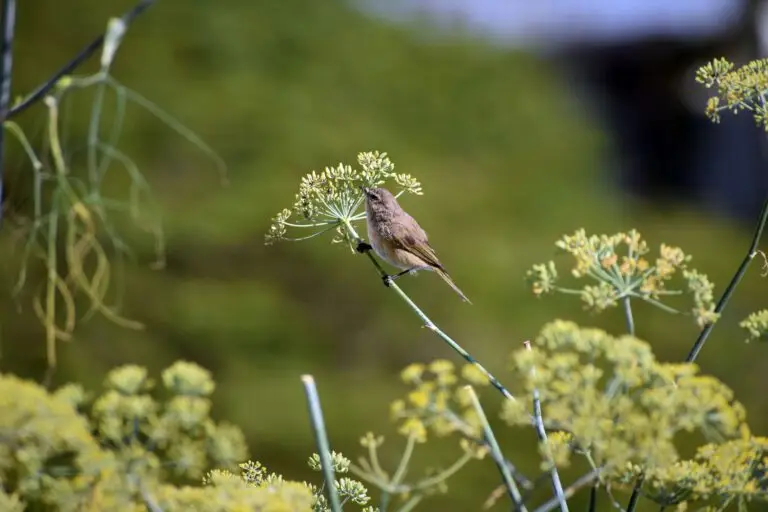
Does Golden Alexander remind you of Queen Anne's Lace?
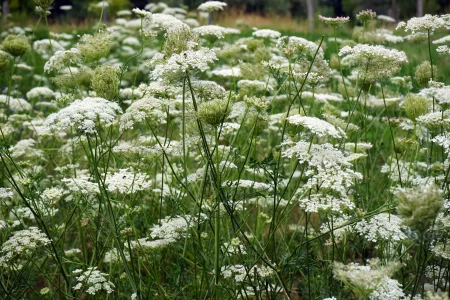
Queen Anne’s Lace
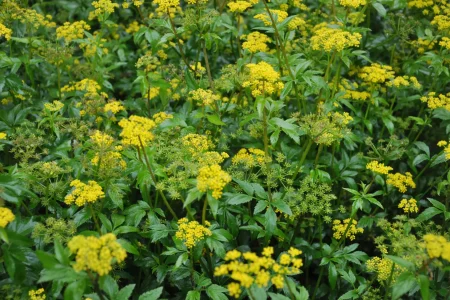
Golden Alexander
You’ve probably seen a white version of Golden Alexander on the sides of highways or on hikes, especially in the Northeast or Midwest. The white-flowered version is known by its common name ‘Queen Anne’s Lace.’
Sadly, Queen Anne’s Lace is not native to North America. (Unsurprisingly, due to its fancy English name, it’s native to Europe.)
Where Golden Alexander shines in your yard
Golden Alexander is a natural for sunny borders, pollinator gardens, and meadows. Its early and longtime bloom time (April–June) fills the gap before summer natives like coneflowers and bee balm kick in. Because it grows 2–3 feet tall, it works beautifully as a medium-height filler between shorter groundcovers and taller showstoppers like Joe Pye Weed or Blazing Star. IPlant a few together for a bright splash of yellow that lights up the garden and draws butterflies from across the yard.
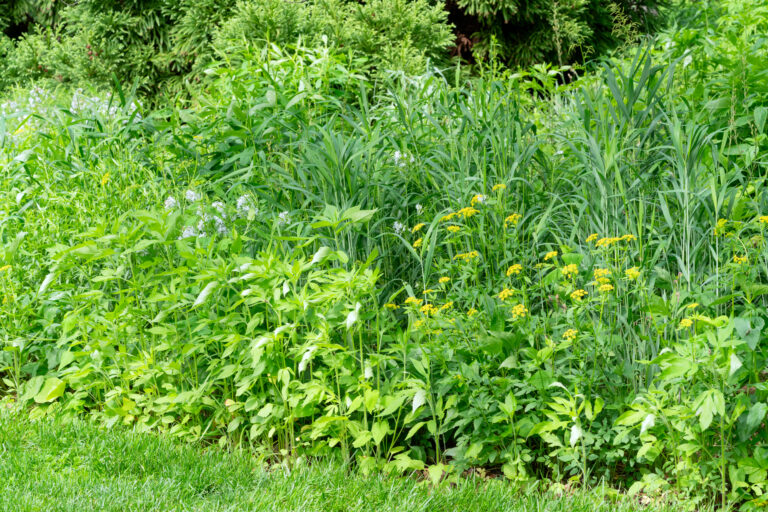
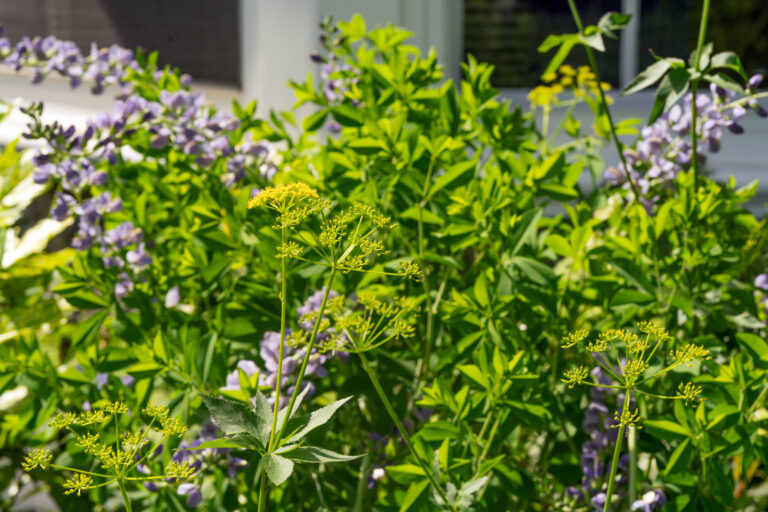

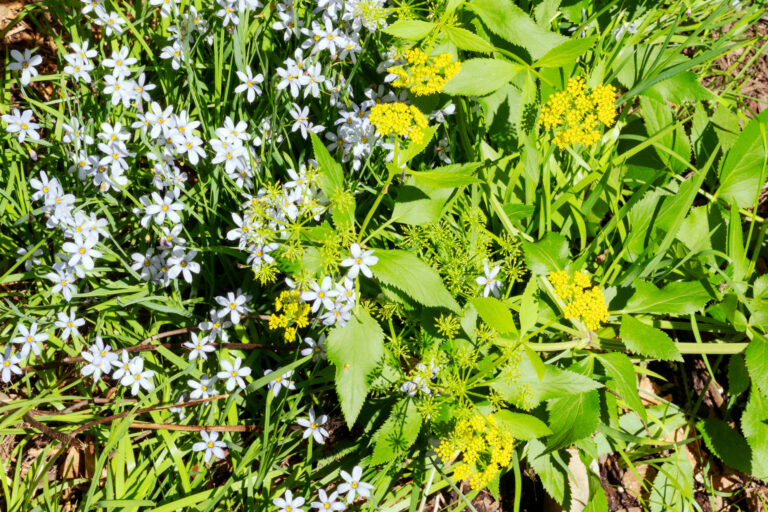
What pairs well with Golden Alexander?
Golden Alexander pairs beautifull with other native plants. Bee Balm, Aster, Coreopsis, Nodding Onion, and Milkweed all grow well with Golden Alexander.
Golden Alexander is a beautiful and easy-to-grow plant that’s perfect for any garden in the Northeast, Mid-Atlantic, Midwest, or South. By following the simple care tips we’ve shared, you can enjoy its bright yellow blooms for years to come. The two species both off host plant benefits and provide bright pops of yellow for your garden. To get more ideas on native plant gardening, explore our native plant library. Or, keep exploring plants for butterflies in our Native Host Plants for Butterflies round-up. Happy planting!
Sources
- Harstad, Carolyn. Go Native!: Gardening with Native Plants and Wildflowers in the Lower Midwest. (1999), 213.
- Johnson, Lorraine. 100 Easy-to-Grow Native Plants for American Gardens in Temperate Zones. (1999), 62.
- Taylor, Patricia A. Easy Care Native Plants. (1996), 30-31.
- Lake Forest College, Golden Alexanders
- NC State Extension, Zizia aurea
- NC State Extension, Zizia aptera
- Missouri Botanical Garden, Golden Alexander
- Minnesota Board of Water and Resources, Golden Alexander. (PDF).
- USDA Plants Database, Zizia aptera
